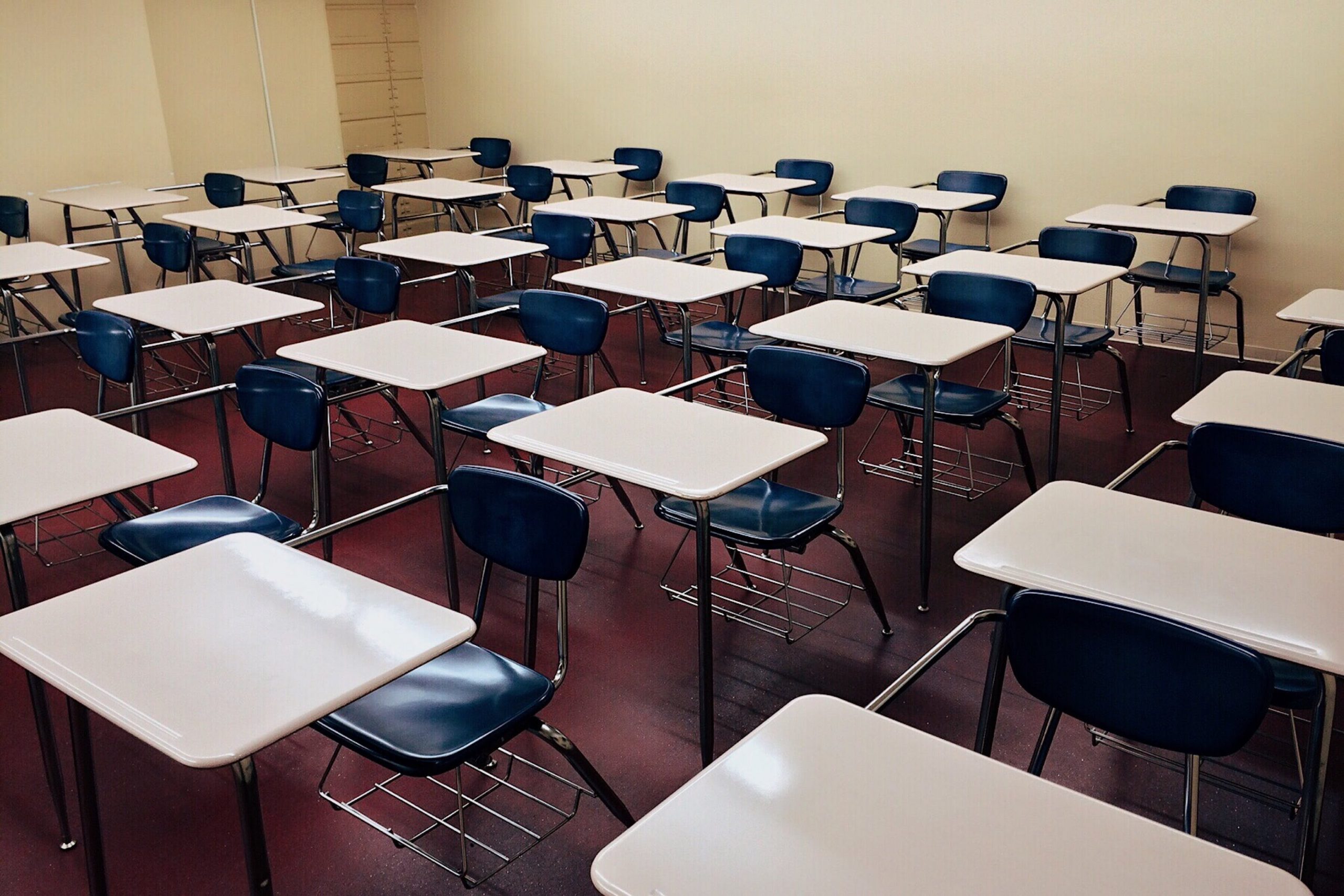
A room of empty desks. Image by Pixabay from Pexels is licensed under Pexels license.
Racism is found everywhere in America – from neighborhoods to the criminal justice system, and even in classrooms, where Black boys are more than three times as likely to be suspended or expelled from school than White boys are. In a recent article, Dr. Jayanti Owens looked into one possible explanation for this disparity: differences in how Black, White, and Latino public school teachers assign blame to their male students for minor classroom misbehaviors.
Dr. Owens conducted her study on 1,339 teachers who were nationally representative of racial and gender demographics from 295 schools across the United States. To test the impact of teacher blaming bias, Dr. Owens and professional videographers worked with 11 high school-aged, undercover actors (four Black boys, four Latino boys, and three White boys) to film short clips of an actor from each racial group either throwing paper, texting during class, or slamming the door in the classroom. Owens then asked the teachers to evaluate and describe the behaviors of the students in a textbox after viewing one of the nine possible videos (three misbehaviors and three racial groups, creating nine unique vignettes).
Owens found that, on average, White teachers were more likely to assign blame to Black students than White students for identical classroom misbehaviors. However, these assignments varied by the race of the teachers. When White teachers were asked to describe the behaviors of the Black students in the video clips, they tended to use language that assigned blame to the personality of the student, rather than the potential factors outside the student’s control. In contrast, Black teachers assigned blame equally across all student races, while Latinx teachers assigned significantly more blame to Black students than White and Latino students.
Owens suggests that the higher attribution of blame by teachers of color to Black and Latino students could be a result of what she terms ‘tough love,’ where Black and Latinx teachers hold their students of color to higher behavioral standards to “prepare [their] minority students for the realities of racism.”Looking beyond the classroom, Owens emphasizes that these different standards for attributing blame can have real and long-term effects on students. The more blameworthy that teachers see their students, the greater the chance that students will be disciplined by the school. Students who are suspended or expelled from school have a higher likelihood of dropping out, which studies show leads to higher rates of incarceration and other lifelong disadvantages.

Comments